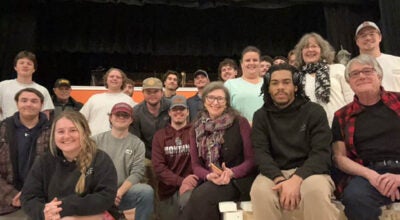Virtual Virginia offers enhanced online learning options
Published 9:27 am Wednesday, May 5, 2021
|
Getting your Trinity Audio player ready...
|
As this unconventional school year comes to a close, many public school districts in the commonwealth, including Prince Edward County Public Schools (PECPS), are announcing students will have the option to enroll in online classes through Virtual Virginia next semester.
But what exactly is Virtual Virginia, and how can area children benefit from this program?
According to Virtual Virginia Executive Director Brian Mott, the program, which was thrust into the spotlight over the last year due to the COVID-19 pandemic’s impact on the commonwealth, can actually trace its roots back to the 1980s with the creation of an entity known as the Virginia Satellite Education Network (VSEN) which offered Advanced Placement (AP) and world language courses through satellite television to rural or underserved students throughout Virginia. The primary mission of the network was to provide students with courses unavailable at local schools.
Several years ago, VSEN expanded its program to include web-based delivery of several different courses and electives to form what would be known as the Virginia Virtual Advanced Placement School (VVAPS).
In 2005, the Virginia Department of Education (VDOE) saw a need to combine these two platforms and move toward fully embracing online education, forming what is now Virtual Virginia. Since then, thousands of learners across the state have successfully completed courses using the program. The organization has plans to expand even further in the near future.
In a Monday, May 3, interview, Mott said Virtual Virginia offers K-12 courses through a partnership with local public schools, but it is the school division itself which chooses what grade levels to offer virtual learning through. Some schools only offer Virtual Virginia courses in middle or high school, while others might give families the option to participate from as early as kindergarten.
The courses offered through the platform are expansive. In Virtual Virginia’s K-5 program, students can learn subjects such as math, science, social studies, reading, language arts and STEM (science, technology, engineering and math). In the sixth- to 12th-grade program, students’ schedules begin to diversify, offering a more personalized experience. Possible courses for middle and high schoolers include subjects such as English, computer science, fine arts, health and PE (physical education), math, science, social studies, world languages and electives. Students can pick from a catalog of courses to find exactly what classes suit their individualized needs.
But how does education through Virtual Virginia actually work? Mott explained both the K-5 and 6-12 programs include a blend of asynchronous and synchronous learning, a teacher of record, one-to-one and small group instruction and office hours for parents and guardians.
Since students enrolled in Virtual Virginia are still students of their respective public school division, learners remain affiliated with their school and can participate in extracurriculars, athletics and any other local programs.
“Students remain part of their school culture, part of their school community, but they’re just doing their learning experience online,” Mott said.
The unique, virtual learning experience also allows students to stay connected to their resources even after the school day is over. Mott said Virtual Virginia runs a robust learning management system, and course content is available to students 24/7.
It should also be noted students can be enrolled in Virtual Virginia full- or part-time. Learners can choose to have a fully virtual learning experience or can use the program to enroll in just one or two courses if they have a scheduling conflict or a particular course is not offered at school.
While the coronavirus’ impact on education has pointed out some obvious benefits to virtual learning, there are other reasons aside from socially distancing that a family might opt for online classes. Mott said instructors have observed that some students have challenges with in-person education and may simply learn better online.
“Some learners have really thrived in that environment, and they may want to continue to learn that way,” he said.
While the workload for a Virtual Virginia student is usually comparable with typical, face-to-face instruction, educators have noted high school learners are often able through virtual learning to free up extra time during the day, ultimately helping them to have time for picking up a part-time job, an internship, helping out with the family or being able to spend more time participating in hobbies. For elementary-age students, online learning provides important flexibility for critical parent/guardian engagement.




